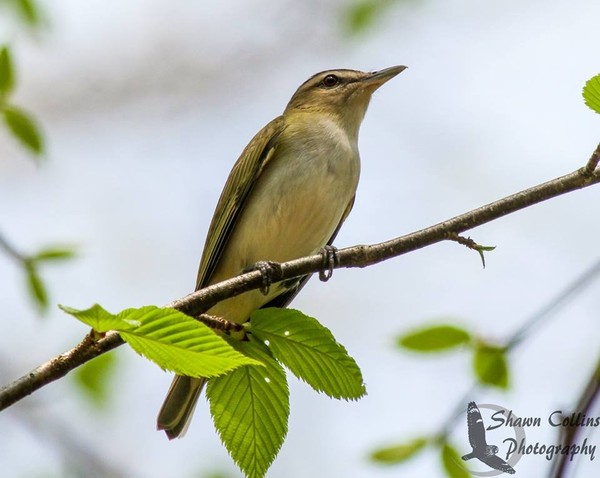
Last weekend’s rain and north winds may have slowed down migration but the birds have to get here eventually. Here are five of the many species to look for thanks to Birdcast’s Upper Midwest and Northeast forecast.
A few red-eyed vireos (Vireo olivaceus) are already here but the bulk of them are arriving this week. Warbler-sized with plain olive backs and white chests, their distinguishing feature is a charcoal eye line. They do have red eyes, as shown in Shawn Collins’ photo above, but it’s unlikely you’ll see this because vireos are usually high among the leaves. Listen for their relentless song, “Here I am. Where are you? Here I am. Where are you?”
“Red-eyed Vireo (Vireo olivaceus)” from xeno-canto by Ross Gallardy. Genre: Vireonidae.
Black-billed cuckoos (Coccyzus erythropthalmus) nest in contiguous forest but you might find one anywhere on migration. I saw one in Schenley Park last week. About the size of a robin with a very long tail, they have plain taupe backs, plain white chests and black bills that set them apart from their yellow-billed cousins. Black-billed cuckoos have red eyes, too, but you’ll have to be as close as Steve Gosser’s photo if you want to see them.
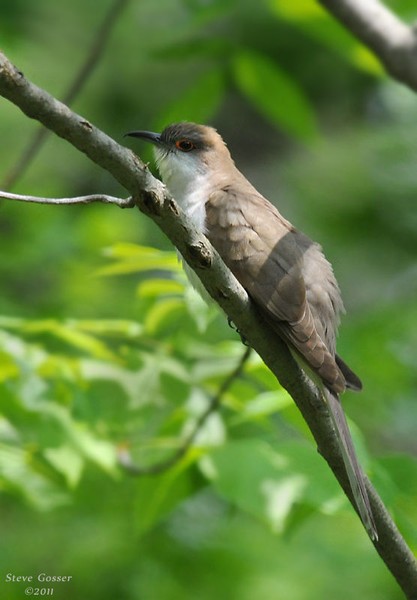
How will you find a black-billed cuckoo? They often sit silently among the leaves but they move like no other bird. Perched in a hunched position they jump from branch to branch with awkward flapping as they search for caterpillars. If they were as large as the squirrel cuckoo of Central and South America, you’d say they move like squirrels. Here’s the black-billed cuckoo’s song:
“Black-billed Cuckoo (Coccyzus erythropthalmus)” from xeno-canto by Andrew Spencer. Genre: Cuculidae.
At last we’ll see a shorebird that’s easy to identify! Dunlin (Calidris alpina) are due here this week. Most of the time dunlin are so plain that you have to identify them by size, shape and habits but in May they stand out as the only small rusty-backed shorebird with a black patch on its belly.
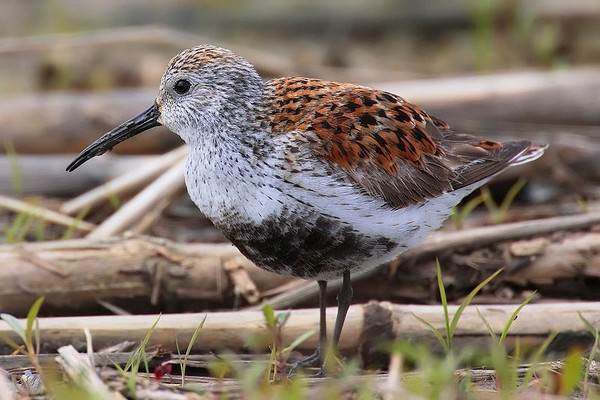
Watch for bay-breasted warblers (Setophaga castanea) or you’ll miss them! They nest in Canada so they’re only here for a few weeks in May. With dark backs, black faces, cream-colored necks and a splash of rusty-red bay on their throats and sides these birds are truly “eye candy.” Their song is so high-pitched that it’s almost beyond my audio range. Click here to hear.
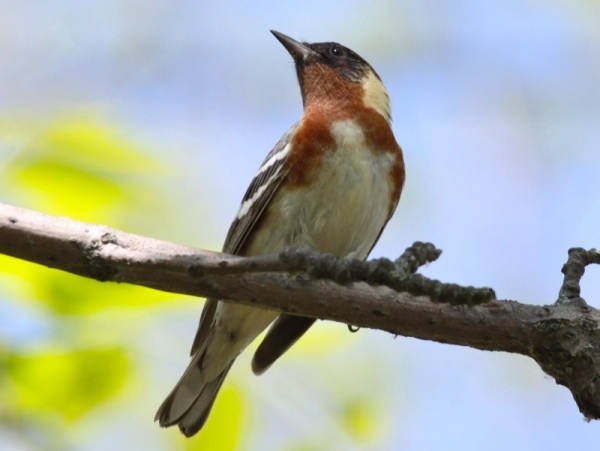
Canada warblers (Cardellina canadensis) are arriving, too, but you’ll have a longer chance to see them. As their name suggests they nest in Canada but they also breed in the forests of northern Pennsylvania and the Laurel Highlands. Look for their charcoal gray backs, yellow throats and bellies, and black necklaces. Unlike magnolia warblers they have no white accents. Their song says, “Chip chuppety, swee ditchety.” Click here to hear.
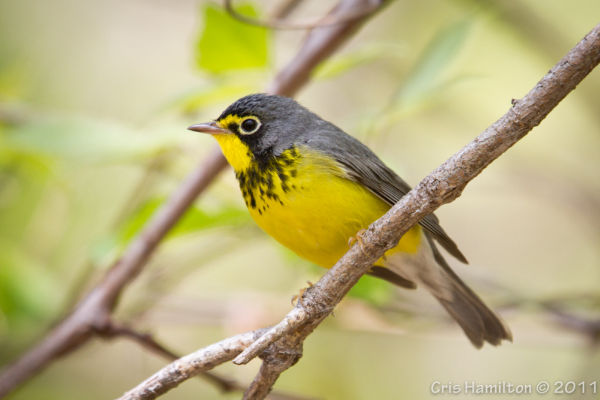
The birds will be hard to see now because the trees have so many leaves … but leaves attract bugs and that’s why the birds are here.
(photo credits:
red-eyed vireo by Shawn Collins,
black-billed cuckoo by Steve Gosser,
dunlin from Wikimedia Commons
bay-breasted warbler by Chuck Tague,
Canada warbler by Cris Hamilton)
Kate, I’m sure you heard about the hundreds of migratory birds who died in Galveston, Texas. So heartbreaking.
The Black and White Warbler returned like clockwork this week to sing his song and flit around the branches of my large Willow Oak tree. He will stay for maybe two weeks then move on.
David, this is very helpful information. In Schenley park this year I’ve noticed that the same species seem to be in the same place day after day for at least a week. Your black-and-white warbler observation made over several years indicates they are very regular about it.